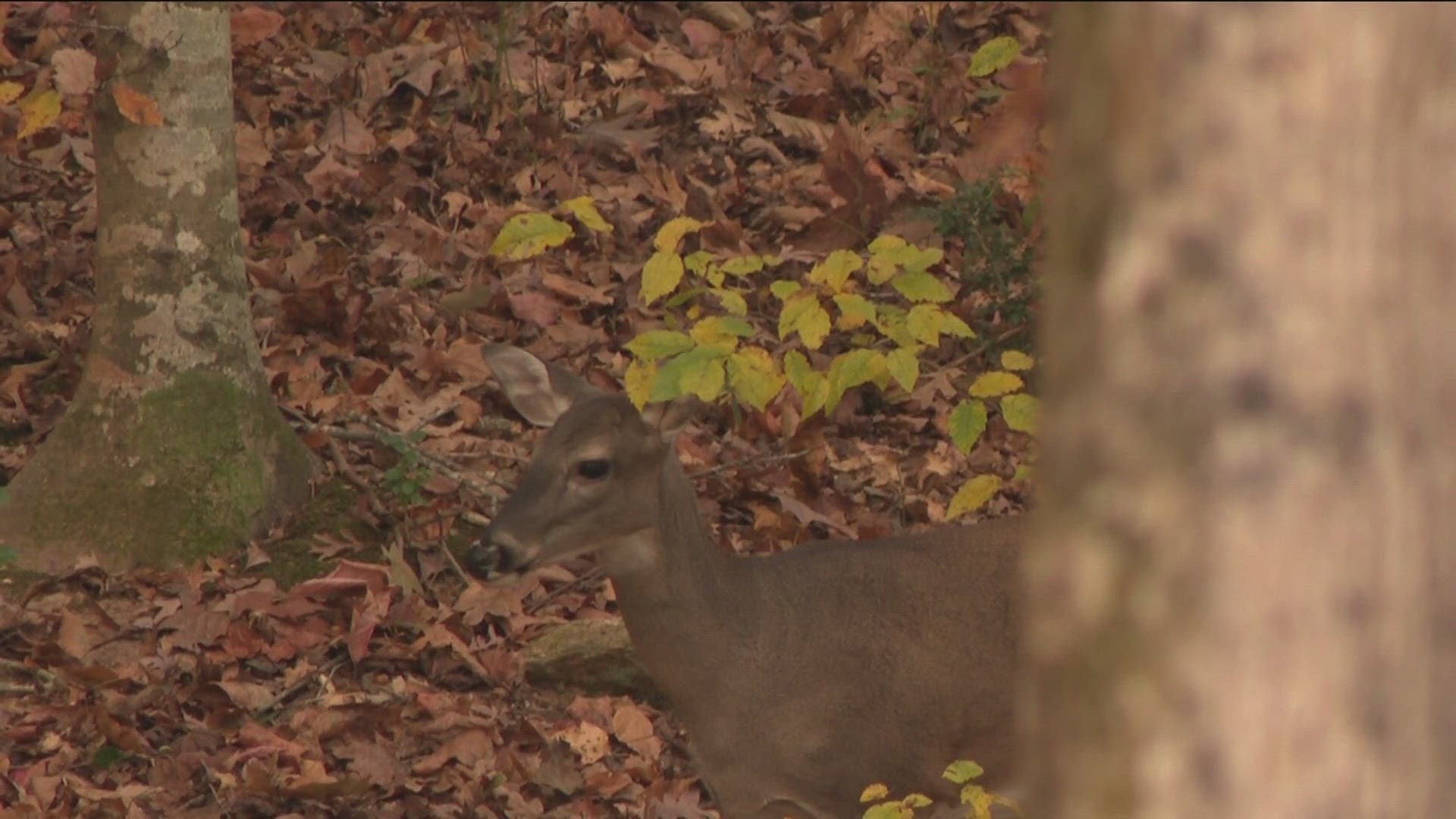ATLANTA — It's the middle of the peak breeding season for deer and the Georgia Department of Natural Resources said that’s when the animals are on the move the most.
The DNR said there are 40,000 to 60,000 car crashes involving deer every year in the state.
Buckhead driver Megan Harrell said she was on the road in broad daylight when she hit a deer a few weeks ago driving back from Lake Oconee.
“I was extremely shocked," she said. "There was blood all over the car, hair all over the car. Yeah, it was not pretty."
She wasn't the only one in the car.
“I had my 5-year-old in the back and he was terrified," she said.
Harrell said there were three deer; two of them stopped, but the third - a large doe - ran straight at them.
“The deer landed on its back and just flailed and got up and ran off,” said Harrell.
Cpt. Michael Burns said Georgia State Patrol responds to these types of collisions all the time, especially in late November.
“We see them on I-20, we've seen them on the Connector, we've seen them on Interstate 85," he said. "They come from the wood line, jump the median wall and get hit on the interstate."
DNR State Deer Biologist Charlie Killmaster said during this season, bucks are chasing does and when pressed, they can jump over 8-foot walls. So, the lower walls along roads are no challenge.
“They have very poor depth perception with their eyes on the side of their head. So, they can’t tell, judge speed or distance or anything like that that could help them prevent getting hit by a vehicle,” said Killmaster.
Here are some tips to stay safe on the road during deer sightings
- First, don't drive drunk or distracted. If you do, you won’t be able to react quickly to anything on the road - especially a darting deer.
- Be aware that this time of year, deer are out in large numbers -- especially around dawn and dusk.
- If you see a deer on either side of the road, slow down. If one crosses the road, know that there is likely at least one other right behind it.
- Next, if a deer runs out, don’t swerve. It’s better to hit it head-on than to hit another car or run off the road into a ditch or tree.
- If you do hit a deer, safely pull off to the right side of the road and immediately call the police.
“Once you have blue lights behind you, you have a more safe scene you can get out and look at the damage,” Burns said.
While larger vehicles with pushed-out bumpers may fare better in these collisions, Killmaster said tools sold to make vehicles “deer proof” don’t work.
“We get the question all the time about deer whistles," Killmaster said. "Those were extensively tested, they are a sort of sound emitting device. It was tested at UGA and they were proven to be ineffective."
Burns said the damage caused by these collisions is significant.
“It’ll take the whole front end off a car and a lot of times, you hit it and it rolls up so, it damages the the hood and windshield,” said Burns.
Harrell’s crash caused $12,000 of damage.
“My whole headlight was caved in. The hood was smashed and the right bumper,” said Harrell.
Harrell said she is now much more aware of the danger of deer.
“If they’re running around in the middle of a busy intersection broad daylight, I’m going to assume they're everywhere,” said Harrell.
If the deer is injured in the crash, drivers should pass that information along to police. However, DNR said if it’s killed, you can legally take the carcass to have that meat processed or donate it.

